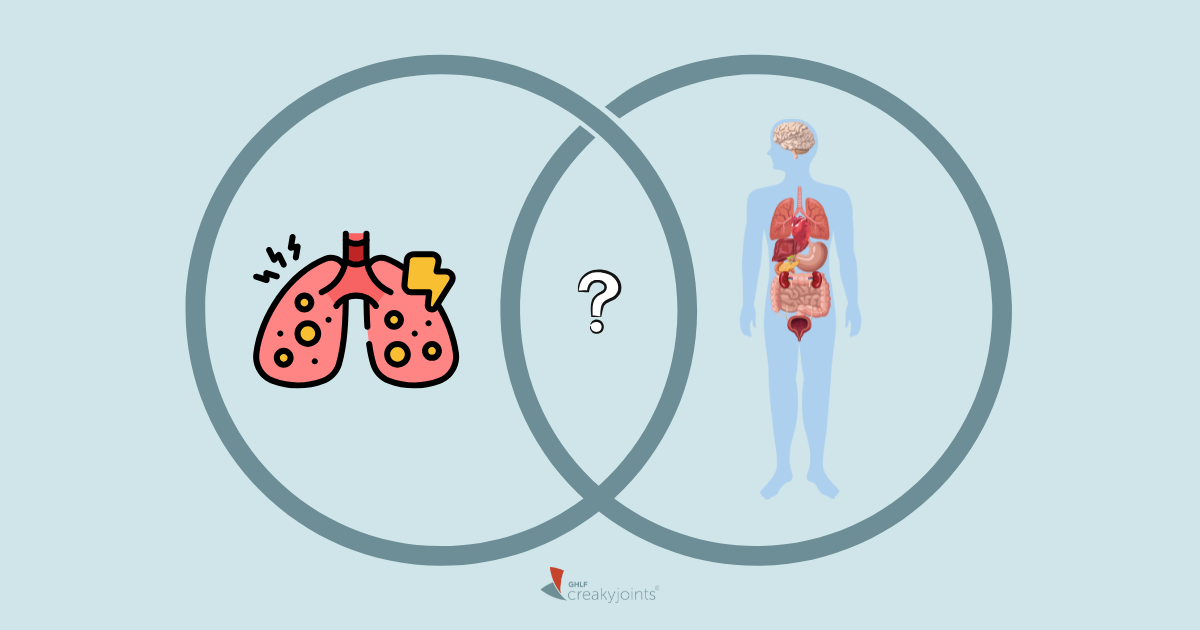

There’s no getting around it: Arthritis can be a real pain. For some people, years of everyday use wear down the cartilage in the joints, leading to osteoarthritis that makes it painful to use the hip, knee, shoulder, or other joints. For others, the immune system acts up and attacks the body’s joints and other tissues, triggering inflammatory arthritis such as rheumatoid arthritis or ankylosing spondylitis.
No matter what type of arthritis you have, stiffness and aching joints become your daily reality.
At times, you’ll experience acute flares from your arthritis, when the pain suddenly becomes worse. “Those are the patients who are in excruciating pain, pretty much debilitated to the point that it helps spur them to see the doctor,” says Karina Torralba, MD, a rheumatologist with Loma Linda University in California. Thankfully, those arthritis flare-up periods are temporary, but even after a flare subsides, chronic pain can still linger through treatment. The everyday activities you never used to think twice about can become painful and exhausting.
But there is hope, and life doesn’t have to be about waiting for the next bout of pain to pass. We talked to rheumatologists and CreakyJoints community members to find some daily tips that can help you beat the pain.
Medication
1. Always take your medication
First things first: Make sure you haven’t been ignoring your prescriptions. “For example, if a medication is supposed to be taken three times a day or two times a day, but a patient only takes one dose, then they don’t feel like there’s an effect,” says Dr. Torralba. “It does take a while for the medication to build up in their body and take an effect.” Sticking with your treatment plan is the best way to get arthritis joint pain relief. If you’ve been feeling better, that’s because of the medications — it’s not a signal that the disease is gone for good.
2. Try a topical treatment
Rubbing a cream on the outside of your joints can give you relief that’s more than skin deep. While herbal supplements don’t show too much promise for arthritis relief, topical creams seem to be more effective, says Dr. Torralba. OTC tropical rubs like capsaicin cream or Icy Hot can block pain receptors or reduce inflammation, giving you relief from arthritis pain. Read more about arthritis creams for pain relief here.
Diet
3. Eat a Mediterranean diet
There’s no magic eating plan that will alleviate arthritis for good, but a Mediterranean-style diet is considered the gold standard anti-inflammatory diet, says Folashade Alade, MD, a rheumatologist for Piedmont Physicians Group in Georgia. Less inflammation may mean less arthritis pain. A recent review in Rheumatology International found that eating a Mediterranean diet — emphasizing fruits and vegetables, whole grains, and fish while cutting back on red meat — shows promise in reducing pain and physical function of rheumatoid arthritis patients.
4. Cut down on sugar
CreakyJoints member Anita Marie Poupa says that avoiding added sugar helps ease the pain of arthritis, and she’s not the only one. In a study of 217 people with RA, desserts and sugar-sweetened sodas were the two foods most often reported to make arthritis joint pain symptoms worse. Limit the sweet stuff to an occasional treat rather than part of your everyday diet.
5. Lose a jeans size
Even if you don’t feel direct pain relief from following a Mediterranean diet or skimping on sugar, the habits could help arthritis joint pain indirectly. Extra weight puts more stress on your joints and is associated with higher levels of inflammation, so getting to and staying at a healthy BMI could lead to less pain. “If there is obesity, which is a risk factor for arthritis, I do gently nudge [patients] to make changes in their diet,” says Saakshi Khattri, MD, assistant professor of rheumatology and dermatology at the Icahn School of Medicine at Mt. Sinai Hospital in New York City. Avoiding sugary, processed, and fried foods while emphasizing fruits and veggies could help ease arthritis pain through weight loss.
Exercise
6. Don’t sit for long periods
Especially if you’re dealing with back pain, staying too sedentary could be contributing to the pain, says Dr. Torralba. “We get a lot of patients who are doing desk jobs, and they’re constantly sitting,” she says. “They tend to forget that over time, sitting is bad for your back.” She recommends getting up at least once an hour to do a bit of stretching by your desk.
7. Schedule regular swim sessions
When it comes to joint pain, it’s use it or lose it — the less you move your body, the more your joints will hurt when you do try to be active. As tempting as it is to stay on the couch to avoid pain, exercise is the best thing for your body in the long run. When you do hit the gym, a swim session could be your best move. “It pretty much negates the effects of gravity when you’re in the pool,” says Dr. Khattri. “Gravity is the enemy of arthritis, especially if it’s in the back or knees.”
8. Take a yoga class
Depending on the class, yoga can be another workout that gets your joints moving without doing extra damage.“Not like hot athletic yoga, but gentle yoga with a little bit of stretching, based on what the joints can tolerate,” suggests Dr. Khattri. In a study of 75 sedentary adults with RA, eight weeks of yoga was linked with improved pain, vitality, and other factors of well-being.
9. Try tai chi
This flowing “meditation in motion” Chinese martial art could relieve pain in both inflammatory arthritis (namely RA) and osteoarthritis, according to a 2016 review in Scientific Reports. “It’s a low-impact exercise,” points out Dr. Khattri. “You have this slow, gentle movement that doesn’t stress the joints.”
Home Remedies
10. Experiment with heat and cold
Hot water bottles and ice packs both have their place in medicine. Heat therapy can open up the blood vessels to promote blood flow, while cold therapy tightens blood vessels to reduce inflammation.As a general rule of thumb, “for chronic pain you use heat; if it’s an acute injury you use a cold compress,” says Dr. Alade. She stresses that some people with acute flares might fare better with heat, or someone with chronic pain might find more relief with cold, so try both and figure out which makes you feel the best.
11. Use adaptive devices
Dr. Alade uses this phrase as a catch-all term for tools that are designed for people whose joints hurt during everyday activities that involve gripping, squeezing, and bending. Seek out thick-handled utensils, or use an electric can opener instead of a manual one. Dr. Alade recommends the brand OXO, which has lines of gadgets designed for people with arthritis. Check out more popular assistive devices for arthritis here.
12. Start using a shoe insert
Your feet carry you place to place, taking the brunt of every step — and sometimes, that impact can cause pain, not only in the feet and ankles but even in the knees and hips. “Sometimes it’s just changing shoes,” says Dr. Khattri, “getting fitted for the right shoe or getting an insert for the right cushioning.” Some drugstores have kiosks where you can walk on a bag to get recommendations for inserts, she says. If those don’t work, schedule a visit with a podiatrist who can offer suggestions based on arch height and instep. Here are more tips for soothing arthritis when it strikes in your feet.
13. Treat yourself to a massage
Massages aren’t just for de-stressing — they can also provide your joints with much-needed pain relief. A study of 42 adults with RA found that those who’d gotten moderate-pressure massages (as opposed to light-pressure) had less pain; better range of motion in their shoulders, elbows, and wrists; and stronger grip strength after a month.
Lifestyle Changes
14. Don’t let stress get the best of you
When you spend your life fearing pain and avoiding activities that might trigger a flare-up, you end up making things worse. It’s easier said than done, but try not to let the fear of pain hold you back when you are feeling your best. “I’ve learned to keep my stress levels in check and adopt a more easygoing approach to life,” says CreakyJoints follower Kel Johan. “No sense in making myself feel worse and causing more flares for things I cannot control.”
“Fear itself is debilitating,” says Dr. Alade. Most of the time, the pain won’t be as bad as you think, so for once proving yourself wrong is a good thing.
15. Remember that “no” is a perfectly acceptable answer
Frustrating as it is, other people won’t always understand what it’s like living with arthritis. Learn your body’s limits, and don’t force yourself to go past them — no matter how much pressure you’re getting from loved ones (or yourself). “There’s nothing wrong with saying, ‘Sorry I can’t go’ or ‘It’s time for me to go home, because I’ve run out of spoons,’” points out CreakyJoints follower Jon Aumann. Here are more tips for handling social plans without the guilt.
16. Bring your shopping cart to the car
Every little bit of help counts, so don’t force yourself to carry heavy grocery bags to the car when your joints are aching. “Instead of carrying the groceries in your arms, try putting them in the trolley and moving it with you,” suggests Dr. Alade.
17. Adjust your computer screen
If you do need to sit at a computer for long periods, having the wrong setup will only make the effects of sitting worse. Make sure your keyboard and monitor are set up so that you can keep your back and neck straight, recommends Dr. Torralba. Keep your feet flat on the floor and set your monitor so your head can stay straight while you look at the screen, the keyboard set where your shoulders can relax.
18. Leave the housework for another day
You might not be able to wrap up tasks as quickly as you used to, and that’s OK. Accepting that you’ll need extra time to get things done is the first step to avoiding overexerting yourself. “I have learned to pace myself to avoid flares,” says CreakyJoints follower Anne Marks. “This can be frustrating, as sometimes I just want to get things done, but I know that if I don’t take a break between (or sometimes during) jobs then I am going to feel it later.” Nothing wrong with saving the vacuuming for tomorrow — or asking a loved one to pitch in. These tips for making household chores easier can help too.





